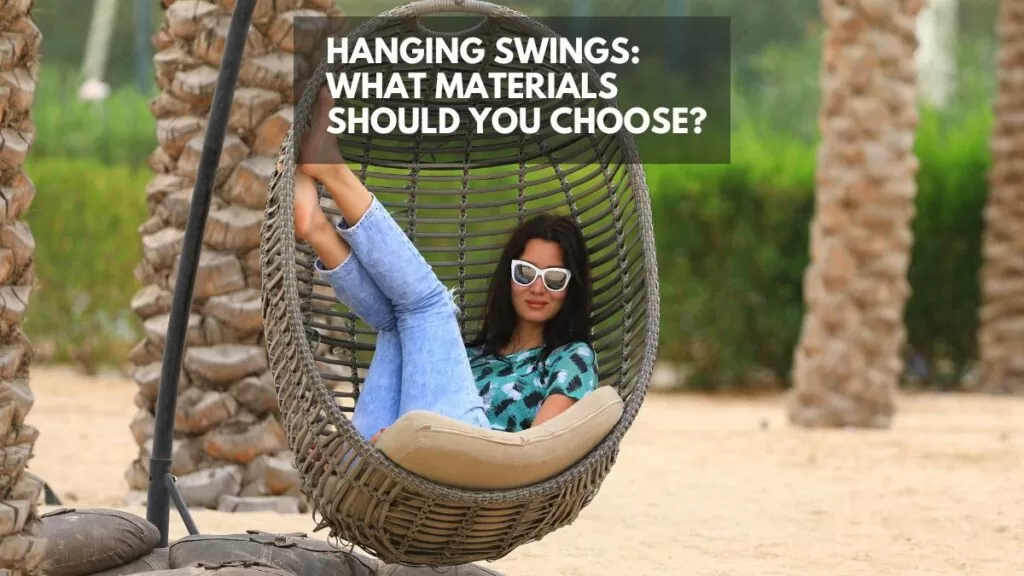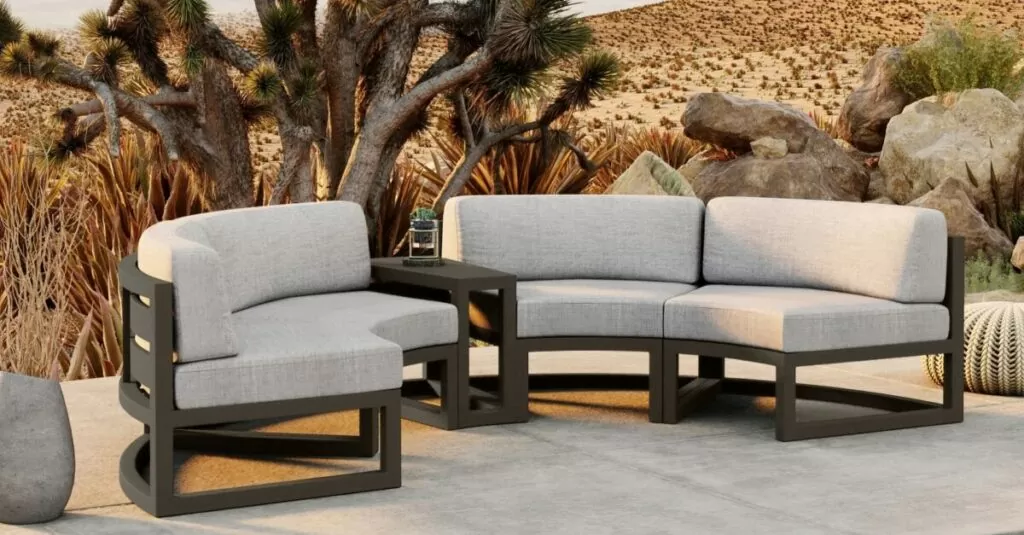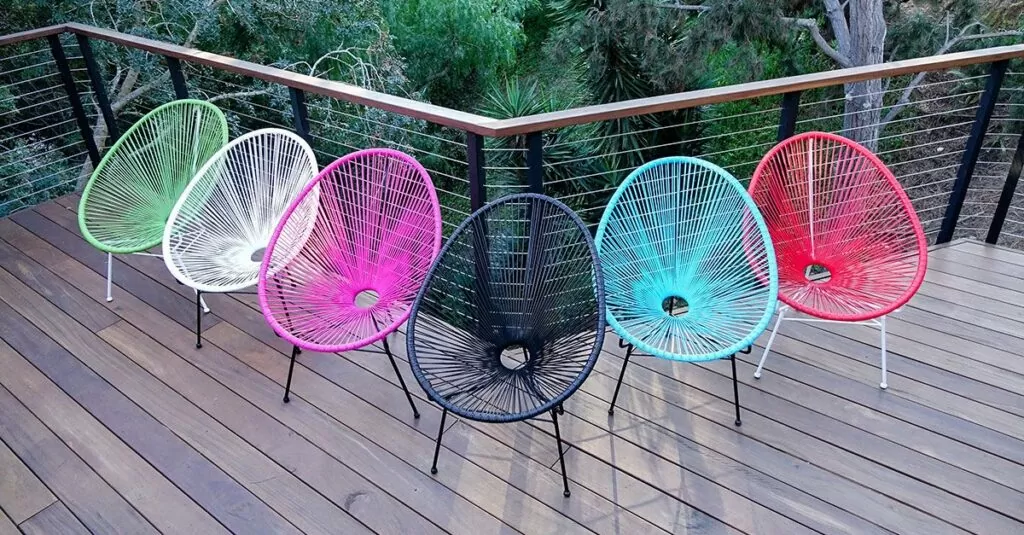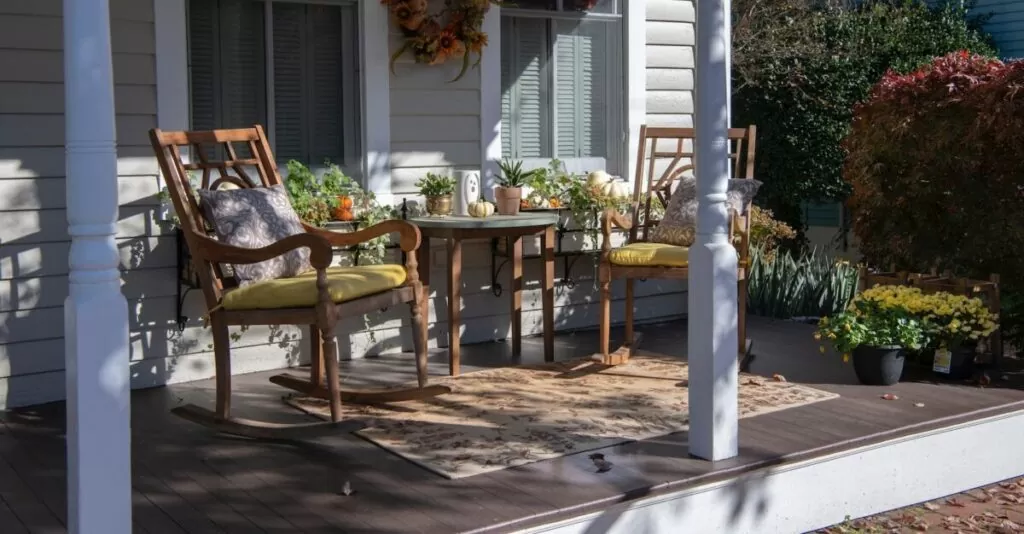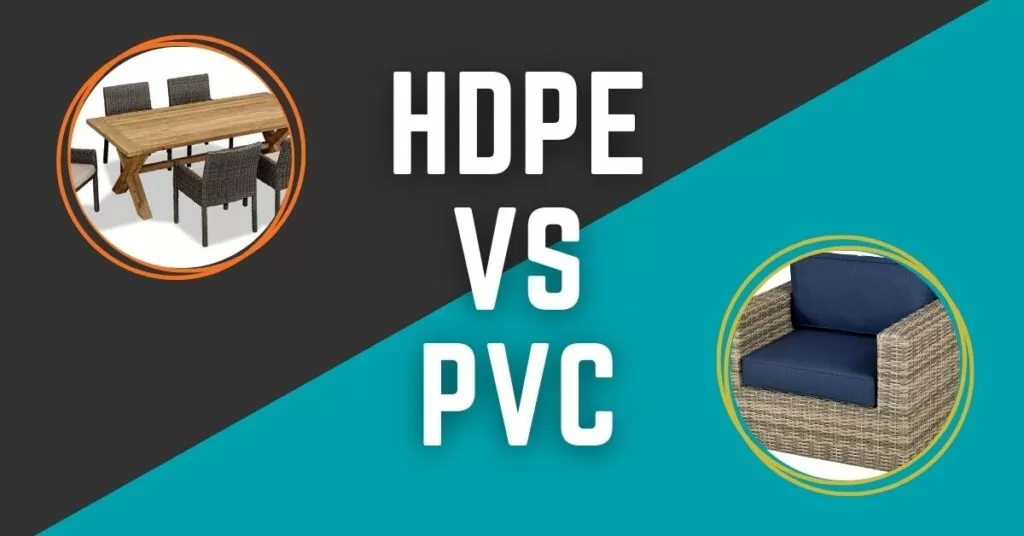Imagine relaxing in your backyard on a warm, sunny day, gently swaying on a hanging chair or swing while the breeze softly caresses your face – sounds delightful, right? As you embark on fulfilling this fantasy of adding an element of relaxation and style to your outdoor space, one crucial question poses itself: what material should you choose for the perfect hanging chair or swing? The answer dramatically impacts not only comfort but also durability, maintenance, and aesthetics. This blog post will guide you through the various materials available to ensure that your patio paradise perfectly suits your needs and tastes. So let’s delve into the world of hanging chairs and swings to discover how making the right material choice can turn your outdoor sanctuary into a haven of bliss!
Hanging chairs and swings come in various materials for the basket, rope, and hardware. Some popular options include natural rattan, synthetic rattan, wood, and olefin synthetic. The choice of material depends on factors such as weather-resistance, durability, aesthetic appeal, and budget. When choosing a material, consider if it is suitable for your needs and complements your outdoor decor.
Common Materials Used for Hanging Chairs and Swings
Hanging chairs and swings come in various shapes, sizes, and materials. But among the most commonly used materials are wood, natural rattan, synthetic rattan, wicker, metal, and rope.
Wooden hanging chairs have been around for centuries and are still popular today because of their natural charm and durability. Many people prefer the earthy look of a solid wood chair and appreciate the craftmanship that goes into making it. Wood can also be stained or painted to match any decor style. However, wooden chairs can be heavy and difficult to move around, especially if they are designed for two people.
Natural rattan hanging chairs have long been considered a symbol of relaxation. They often feature intricate weaves that give the chair a unique texture and pattern. However, natural rattan is not weather-resistant and can rot over time when exposed to rain or humidity. As an alternative, many manufacturers use synthetic rattan or resin to mimic the look of natural rattan but with added durability.
Wicker hanging chairs are made from woven plant fibers such as willow or reed. They offer a rustic look that appeals to those who love natural materials. Wicker chairs can also be lightweight compared to wooden ones, making them easy to move around as needed. However, wicker is not weather-resistant and may require regular maintenance to prevent damage from moisture.
Metal hanging chairs are sturdy and durable but can feel cold to sit in without added cushions or padding. Metal chairs can range from simple designs made of wrought iron or aluminum to more intricate styles featuring decorative patterns or curves that evoke vintage elegance. Rope hanging chairs are made from either cotton or polyester fibers woven into intricate macrame knots. Rope chairs impart a bohemian vibe that complements a variety of outdoor settings.
| Study/Source | Key Findings |
|---|---|
| International Journal of Mechanical, Material Engineering Research (IJMMER) | Hanging chairs and swings made from synthetic materials such as polyethylene rattan exhibit high durability, weather resistance, and corrosion resistance, making them suitable for outdoor use. |
| Global Industry Analysts, Inc. | Wooden hanging chairs account for approximately 12% of the total hanging chair market share due to their natural aesthetic appeal and perceived quality. |
| Journal of Textile Science and Clothing Technology | Textile egg swings – while not as popular as other forms of hanging chairs – were favored by users seeking added comfort and softness when compared to rigid material options like wicker basket or wooden-based hanging chairs. |
Wood and Natural Rattan
Wooden hanging chairs can be made from a variety of materials, including teak, oak, cedar, or bamboo. The type of wood used influences the chair’s durability, appearance, and price point. Teak, for example, is known for its longevity and resistance to weather damage. Teak wood patio furniture can last up to 50 years when maintained correctly.
Natural rattan hanging chairs offer a more relaxed look compared to wooden ones. Rattan is characterized by its pliability and flexibility, which lets artisans create intricate weavings that shape the chair into delicate curves. Natural rattan is also eco-friendly since it comes from a sustainable source: the tropical forests of Indonesia.
However, natural rattan has some downsides that buyers should consider before committing to it. One drawback is its susceptibility to mold and mildew growth in humid climates or during rainy seasons. Another limitation of natural rattan is its vulnerability to water damage over time if not properly sealed or coated. It can also fade faster under sunlight compared to synthetic alternatives.
A popular wooden hanging chair model is the Globo Chair produced by Byer of Maine. The Globo Chair is made of weather-resistant solid spruce wood and has a high-quality cushion filled with Kapok fibers for extra comfort. Another well-known model is the Double Globo Royal chair produced by the same company.
Similarly, one of the most popular natural rattan hanging chair models is the Egg Swing Chair designed by Nanna Ditzel in 1959. The Egg Swing Chair features an organic curved shape that cradles the body comfortably while providing privacy and acoustic separation from the surrounding environment.
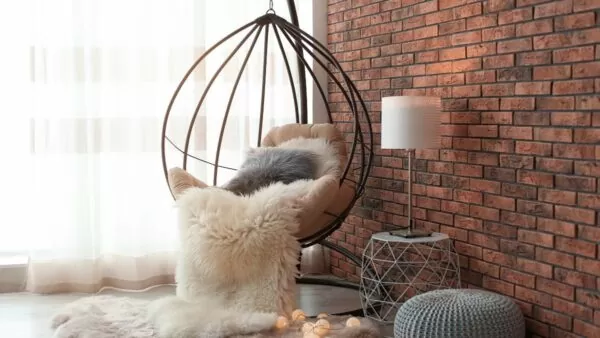
Synthetic Rattan and Wicker
Synthetic rattan and wicker are two of the most popular materials for hanging chairs and swings. They are durable, weather-resistant, and visually appealing, which makes them ideal for outdoor use. Both materials mimic the look of natural rattan but offer practical benefits, such as longer lifespan and easier maintenance.
One of the main benefits of synthetic rattan is that it can withstand harsh weather conditions. It’s not prone to fading, cracking or molding, which means that it can last for years without losing its aesthetic appeal. This material is made from high-quality plastic fibers that are tightly woven around a metal-frame, creating a sturdy support structure.
Synthetic wicker is also a great choice for those looking for an outdoor hanging chair or swing that can withstand the elements. Unlike natural wicker, which can crack and fade over time when exposed to sunlight, synthetic wicker is UV-resistant and will retain its original color and shape. This material is usually made from polyethylene fibers that are easy to clean and maintain.
However, some people argue that synthetic materials lack the natural warmth and authenticity of real rattan or wood. While this may be true to some extent, synthetic rattan and wicker come in various colors and textures that closely resemble their natural counterparts. In fact, many manufacturers have improved the quality of these materials over the years to make them look more realistic.
Another advantage of synthetic rattan and wicker is that they require minimal upkeep. You don’t have to worry about re-painting or re-staining them like you would with wooden swings or chairs. Simply wipe them down with a damp cloth to remove dirt or stains. Plus, they are lightweight compared to other materials, which makes them easy to move around or store.
Think of synthetic rattan and wicker like the “smartphone” of hanging chairs and swings – they are versatile, durable, and low-maintenance. You don’t have to be an expert in furniture care to keep them looking great. Plus, with advances in technology and design, synthetic materials have become more comfortable than ever before.
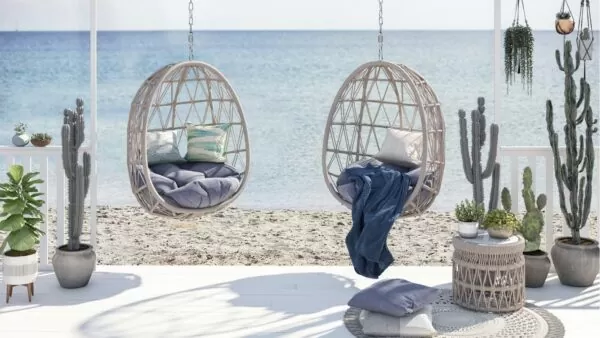
Metal and Rope
Metal and rope may not seem like a natural choice for hanging chairs or swings, but they have become increasingly popular in recent years. These materials offer unique benefits that other materials cannot match. Metal is strong, sturdy, and often used for more outdoor modern furniture designs. Rope, on the other hand, provides a natural look that is both visually appealing and comfortable.
When it comes to metal hanging chairs or swings, the key is to choose high-quality materials that can withstand the weight of the user. Steel or aluminum frames are sturdy enough to support even heavy-weight individuals without bending or breaking. Plus, metal frames can be finished with different colors or coatings that provide protection against rust or corrosion.
Another advantage of metal hanging chairs or swings is that they are sleek and modern-looking. They can fit seamlessly into any outdoor space without clashing with other decor elements. Whether you want a minimalist design or a bold statement piece, there’s a metal chair or swing out there for you.
However, some people may find metal chairs or swings uncomfortable due to their hard surface. While cushions can alleviate this problem to some extent, they may not be suitable for all types of weather conditions. Outdoor cushions can get wet or moldy if left outside during rainstorms or high humidity.
Rope hanging chairs or swings offer a more traditional look that is both cozy and inviting. The natural fibers conform to your body shape for maximum comfort while providing breathability as air flows through the gaps between strands.
Think of rope hanging chairs or swings like a “hammock” for your patio or garden. They offer a different experience than other materials, providing a more relaxed and leisurely way to unwind after a long day. Plus, with the right cushions, they can be just as comfortable as any other type of hanging chair or swing.
- Metal and rope are unique materials to consider when choosing hanging chairs or swings for your outdoor space. Metal frames provide strength and durability, as well as a sleek and modern look that can fit seamlessly into any decor. However, they may not be the most comfortable due to their hard surface. On the other hand, rope seating offers a cozy and inviting feel with natural fibers that conform to your body shape for maximum comfort. It’s like having a hammock in your patio or garden and can provide a more relaxed way to unwind. With the right cushions, both metal and rope hanging chairs or swings can be equally comfortable and visually appealing.
Evaluating Material Features
When choosing the materials for your hanging chair or swing, it is important to consider their unique features. Each material has its own advantages and disadvantages, and some may be better suited for certain environments or styles than others.
Firstly, consider the aesthetic appeal. Natural materials like wood and rattan offer a warm and rustic look, while synthetic materials like wicker can provide a sleek and modern feel. Metal and rope offer an industrial or nautical vibe respectively. Pick a material that complements the overall style of your outdoor living space.
Next, think about comfort. Soft materials like cotton hammocks offer great comfort, while hard basket structures may need additional padding or cushions to enhance comfort. If you intend to use your hanging chair or swing frequently for extended periods, make sure you choose a material that provides adequate support.
Finally, evaluate maintenance requirements. Some materials require more maintenance than others in order to retain their appearance and quality over time. Ensure that you are able to keep up with the recommended cleaning and care for your chosen material.
For example, if you have small children who will be using the hanging chair frequently, softer materials may be a safer option as they provide cushioning in case of falls. In such cases, natural cotton or polyester ropes can be a good choice as they are smooth and gentle on skin while still being supportive.
Synthetic materials like resin wicker or synthetic rattan require significantly less maintenance compared to natural fibers since they are resistant to weathering and moisture damage while still looking like real wicker or rattan. This makes them particularly well-suited for outdoor use where they can withstand harsh weather conditions without fading or becoming warped.
However, synthetic fibers may not always have the same level of durability when put against natural materials like wood or bamboo which tend to hold up well over time as long as they are appropriately treated and sealed. Additionally, certain types of metal may require regular rust treatment to prevent corrosion – another maintenance consideration.

Durability and Weather-Resistance
Durability is perhaps one of the most important factors when it comes to outdoor furniture, especially items like hanging chairs and swings which are exposed to the elements all year round.
One consideration is the material’s strength in terms of weight capacity. Hard materials such as wood, metal or hard plastic tend to be sturdier compared to basket-like structures made of soft materials like wicker or rattan.
Another factor is the material’s ability to withstand environmental conditions such as UV rays, moisture and temperature fluctuations. Natural fibers like wicker or bamboo can be particularly susceptible to this kind of wear-and-tear as sunlight can cause them to fade over time. Mildew can also form in areas with high humidity levels if these fibers spend too much time in damp conditions.
Synthetic alternatives like all-weather resin or powder-coated metal tend to hold up better in harsh weather conditions by nature. Rust-resistant aluminum alloy frames, for example, can provide a good balance between lightweight construction and sturdy durability.
For example, hard materials like wood or metal are ideal for use in areas that receive direct sunlight or experience significant temperature fluctuations since they do not warp or crack as easily compared to softer materials that expand and contract more readily.
However, hard materials may not always offer the same level of comfort compared to softer alternatives that offer cushioning through their basket-like structures. In addition, using a protective cover when your hanging chair is not in use during inclement weather (such as heavy rainfall or snowfall) could significantly increase its longevity and durability.
Some believe that natural materials provide a more eco-friendly and sustainable option compared to their synthetic counterparts. However, the production of natural fibers like wicker or rattan can have negative environmental effects if not responsibly sourced. Synthetic materials can also be made sustainably from recycled or biodegradable content. Additionally, some synthetic materials may require replacement sooner than others and thus adding to landfills.
Aesthetic Appeal and Comfort
When it comes to hanging chairs and swings, not only do you want them to be functional and durable, but you also want them to look great and feel comfortable. After all, they are intended to be a cozy place for you to relax and unwind. Let’s dive into the different materials and designs that contribute to the aesthetic appeal and comfort of hanging chairs.
First up, let’s talk about natural materials like wood and rattan. These materials can give off a warm and earthy vibe that can make any outdoor space look inviting. However, depending on the design, they may not be as comfortable as other softer materials like cushions or fabric. To make wooden or rattan chairs more comfortable, consider adding pillows or seat cushions that match your decor.
Synthetic rattan and wicker chairs offer the charm of traditional materials without requiring as much upkeep or worrying about weather damage. They can be woven into intricate designs that range from modern to bohemian styles while providing ample comfort thanks to their lightweight build.
If you’re looking for something more playful or outside-of-the-box when it comes to design, there are also metal hanging chairs or rope swings available. Metal frames can vary from minimalistic geometric shapes to more organic shapes with plenty of curves. Rope swings have a nautical flare and give a uniquely laid-back feel with maximum relaxation in mind. Consider how each material will fit into your personal style when choosing which one is right for you.
Lastly, comfort itself should never be overlooked no matter the type of hanging chair you choose. Apart from installing cushioning accessories in your chair, one key factor is considering the size of the chair – make sure it can accommodate your unique body shape before purchasing! Another factor is investigating how supportive your chosen material allows for – does it offer proper back support if it will serve as seating? Does it lack rigidity if it is acting as a swing? These are crucial aspects to consider that will ensure you get the most out of your hanging chair.
For instance, there is an old fashioned American classic style known as the Adirondack chair. Built in the early 1900s in New York State, the wooden chair design is popular in outdoor patio settings and associated with relaxation, all while adding to the natural aesthetic surroundings.
However, despite how comfortable the design may appear, very little people actually find it so. In contrast to modern furniture designs which put ergonomics first, Adirondack’s stiff upright angle lacks orthopedic credibility. Although customers flock around it for its timeless appeal, a contemporary update could cater more towards user comfortability.
On the other hand, others prefer the Adirondack’s hard wood design simply because it requires less upkeep and they prefer its appearance over modern ergonomic oriented chairs that can sometimes clash with nature’s outdoor feel. It depends on what you value most: functionality or appearance/aesthetics?

Cost Comparison of Materials
Another thing to keep in mind when browsing through hanging chair options is the total cost that each material offers. Each material comes at varying price points – some higher end than others – but always remember that pricing alone does not mean quality.
If you’re looking for something that has both aesthetic appeal and durability, natural materials will generally be more expensive compared to synthetic ones. Since natural materials require additional treatment processes and processing from artisans before becoming market-ready, such as weatherproofing or sealing against UV rays, these additional costs translate into higher prices for consumers. Additionally, their rarity contributes to their expense: since natural materials like wood and rattan take longer than synthetics to grow and harvest (and this harvesting has environmental impacts), they will likely cost more per pound than their synthetic counterparts.
On the other hand, Wicker or synthetic rattan, while still well-constructed, are materials that can be produced at a lower cost compared to their natural peers. Manufacturers have the benefit of being able to mass-produce and shape materials in ways that make them look very similar to expensive materials. A same-color synthetic wicker chair may be hard to distinguish from a naturally grown rattan one.
Finally and most importantly, pricing does not always imply quality nor durability. As many factors come into effect when deciding what is best for you – aside from just aesthetic appeal – do your research and read reviews before purchasing.
For example, let’s take a closer look at the use of metal frames in hanging chairs and swings. Metal-framed chairs can be difficult to fabricate while also maintaining a sturdy build – requiring time and temperature-intensive welding processes, which raise prices. However, these durable stainless steel products persist year after year without corrosion or degradation with proper upkeep – making them an excellent investment for patios and outdoor spaces that will see heavy use.
It’s important to note that the price of a product doesn’t always dictate its quality – especially when it comes to furniture like hanging chairs and swings – as there may come times where premium prices are unjustified due to bad production habits.
Yet some customers prefer a cheaper option over paying more money simply for trendy designs they’ll grow bored of quickly. Most people filter their options by budget so the consideration really depends on what someone considers worth paying for: a rare natural material or an affordable artificial option that checks all other boxes? What matters most is finding the balance between what meets your needs as well as aesthetically pleasing designs within your budget range.
Answers to Commonly Asked Questions
How do different materials affect the comfort level of a hanging chair or swing?
Different materials have a significant impact on the comfort level of hanging chairs and swings. For instance, natural fibers such as cotton offer unmatched softness and breathability, making them ideal for summer use. On the other hand, synthetic fibers such as nylon and polyester are durable, weather-resistant, and easy to clean, making them great for outdoor use.
In terms of weight capacity, wooden hanging chairs can support up to 250-300 pounds of weight, while wicker or rattan chairs may not be as sturdy. Metal-framed chairs offer excellent support but may rust over time if exposed to harsh weather conditions.
When it comes to cushioning, foam cushions provide superior comfort compared to their polyester counterparts. Memory foam is also an excellent option since it molds to your body shape, providing extra support and comfort.
Overall, the choice of material depends on various factors such as intended usage, durability needs, and personal preferences concerning comfort. However, regardless of your choice of material, always ensure that safety guidelines are met when installing your hanging chair or swing.
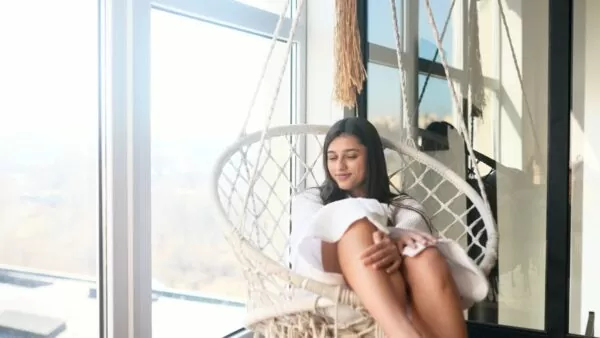
Are there any safety considerations when selecting materials for a hanging chair or swing?
Absolutely! Safety should always be a top consideration when it comes to selecting the materials for your hanging chair or swing. First and foremost, make sure the materials you choose are sturdy enough to support the weight of anyone who might use the chair or swing. The last thing you want is for your relaxing swing session to turn into an unplanned trip to the emergency room.
Additionally, consider the weather conditions in your area and how they may affect the durability of your materials over time. If you live in an area with high levels of moisture or frequent precipitation, you may want to opt for materials that are rust-resistant or waterproof. This will help prevent rust and corrosion from setting in and weakening the structure over time.
As far as specific materials go, many experts recommend avoiding cheaply-made plastics, which can crack or break easily. Instead, look for hanging chairs and swings made from durable materials like hardwoods, wrought iron, or even resin wicker – all of which have been proven to offer great longevity and safety.
Finally, always remember to properly care for your hanging chair or swing by regularly cleaning it and inspecting it for any signs of wear and tear. With proper maintenance and quality materials, your hanging chair or swing could provide years of safe enjoyment.
What are the benefits of using specific materials for hanging chairs and swings?
The choice of material for hanging chairs and swings can have a significant impact on its overall comfort, durability, and aesthetic appeal. When choosing a material for your swing or chair, there are several factors that you should consider, such as weight capacity, weather resistance, cost, and maintenance.
For instance, if you want a durable and weather-resistant option for your outdoor patio swing or garden chair, then synthetic materials like PVC or nylon can be an excellent choice. These materials are lightweight, easy to clean, and can withstand harsh weather conditions without cracking or fading. On the other hand, if you’re looking for a more eco-friendly option that is both stylish and timeless in appearance, natural materials like wicker and rattan can be ideal picks.
Furthermore, when it comes to safety considerations for your swing or chair selection, sturdy hanging chains made from high-quality metals like stainless steel are crucial. According to consumerreports.org, reliable chains made from heavy-duty steel can support up to 600 pounds of weight safely.
Overall, the benefits of using specific materials for hanging chairs and swings depend on several factors such as durability requirements, the price range of the item purchased, aesthetic appeal preferences as well as safety features required while using it. Therefore a careful consideration should be taken before investing in any hanging chair or swing.
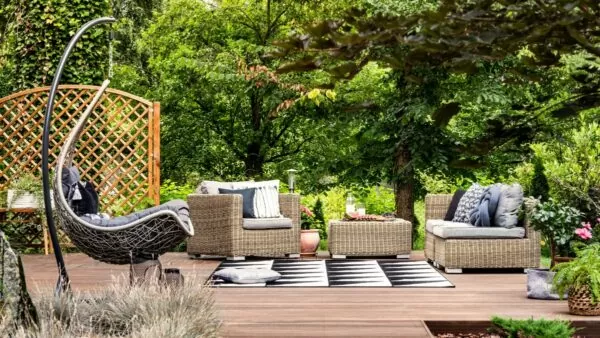
What is the price range for hanging chairs and swings made with different materials?
When it comes to hanging chairs and swings, the price range varies depending on the materials used. For example, if you are looking for an affordable option, a cotton or polyester rope chair can be found between $100-$500. However, if you want to invest in a high-quality chair that will withstand outdoor elements, a teakwood or stainless steel swing with marine-grade ropes can cost anywhere from $800-$3000 or more.
In addition, the type of cushioning and design also contribute to the price range. For instance, an intricately woven wicker swing designed with comfortable cushions may fall within the higher end of the spectrum – up to $3000.
These prices are averages and may vary based on where you live as well as the manufacturer. It’s important to do your research and read reviews before making a purchase decision. You’ll want to ensure that not only is your chosen hanging chair or swing aesthetically pleasing, but also comfortable and long-lasting.
Are certain materials more durable for outdoor use than others?
Yes, certain materials are more durable for outdoor use than others. When it comes to hanging chairs and swings, materials that withstand the elements such as rain, sun, and wind include metal, plastic, and synthetic fabric. Metal, for instance, is known for its strength and rust-resistant properties while plastic is capable of withstanding harsh weather conditions without rotting or warping.
According to a study by Grand View Research Inc., the global market size for metal furniture was valued at USD 17.1 billion in 2020 and is projected to reach USD 19.2 billion by 2027. This indicates the popularity and reliability of metal as an outdoor furniture material.
Additionally, synthetic fabrics such as polyester and acrylic provide excellent resistance to fading and mold growth compared to natural fibers like cotton or linen. According to a report by Technavio Research, the global market size for outdoor fabric was valued at USD 1.78 billion in 2019 and is expected to grow at a CAGR of approximately 5% during the forecast period 2020-2024.
In conclusion, choosing the right material for your hanging chair or swing is crucial for its durability outdoors. Look no further than metal, plastic, or synthetic fabric options for long-lasting outdoor furniture that requires little maintenance.

Todd is a co-owner of Patio Productions and has worked extensively in the furniture industry since 2002, when he started a company that designed and manufactured bathroom vanities. He now has a hand in all online business operations, including keeping tabs on industry trends and making sure Patio Productions remains an innovative leader in the outdoor furniture space. He lives just outside of Denver, Colorado with his wife, two boys, and two dogs. They live on a lake where they can make the most of the outdoor lifestyle. His favorite patio furniture sets are his Harmonia Living sectionals.

